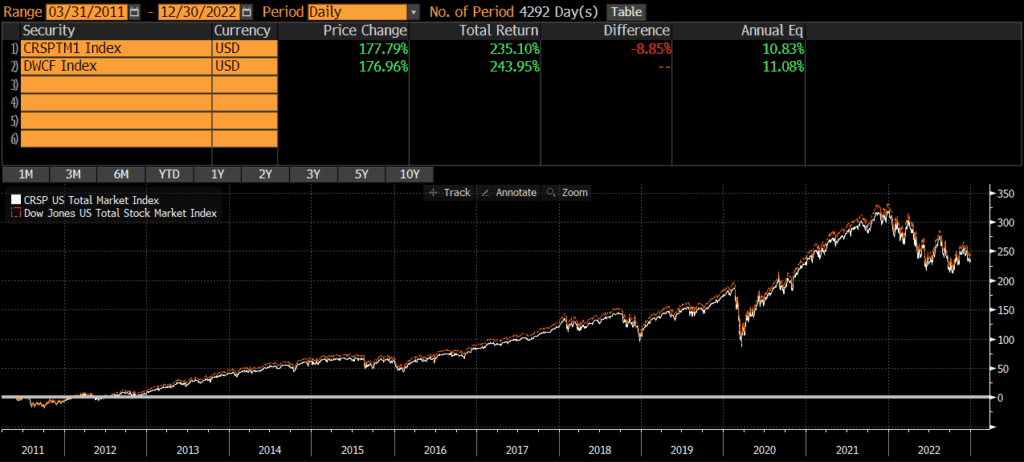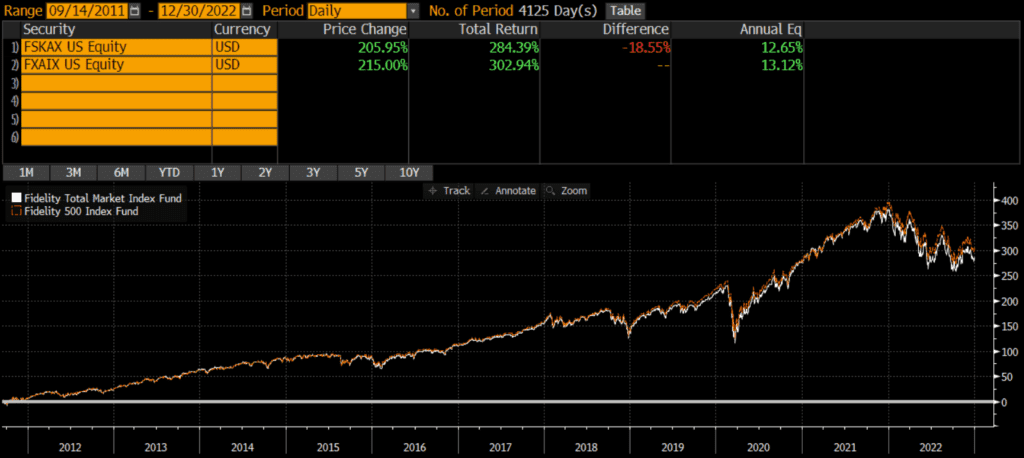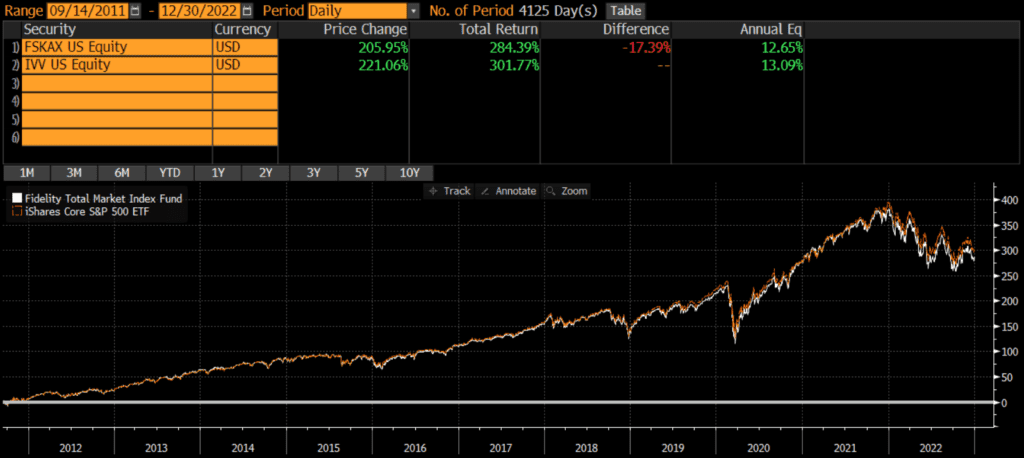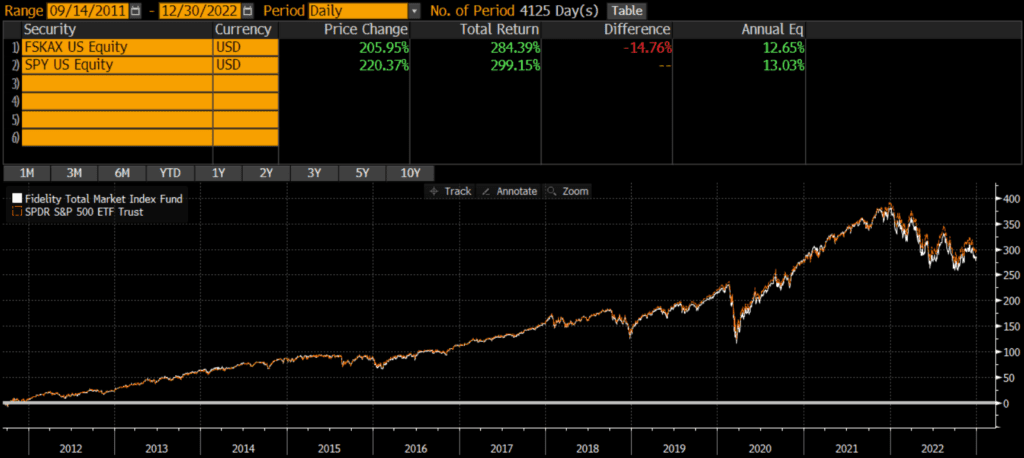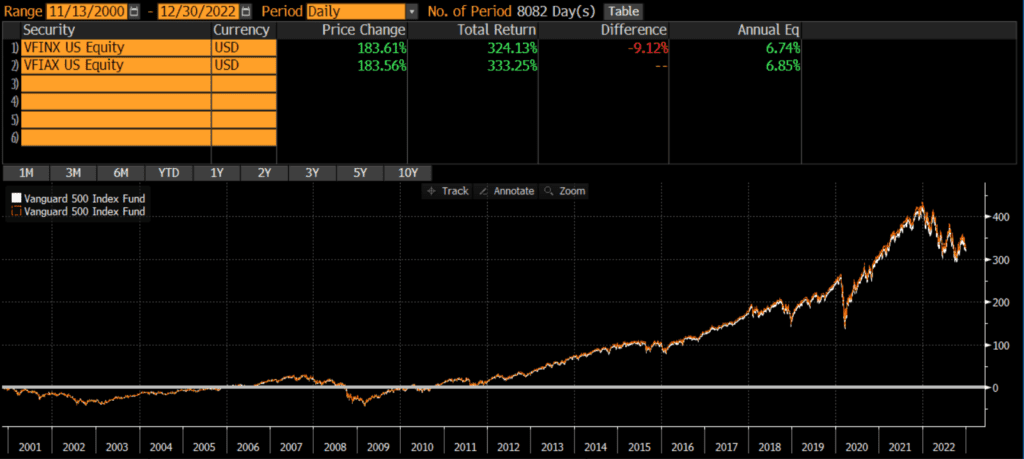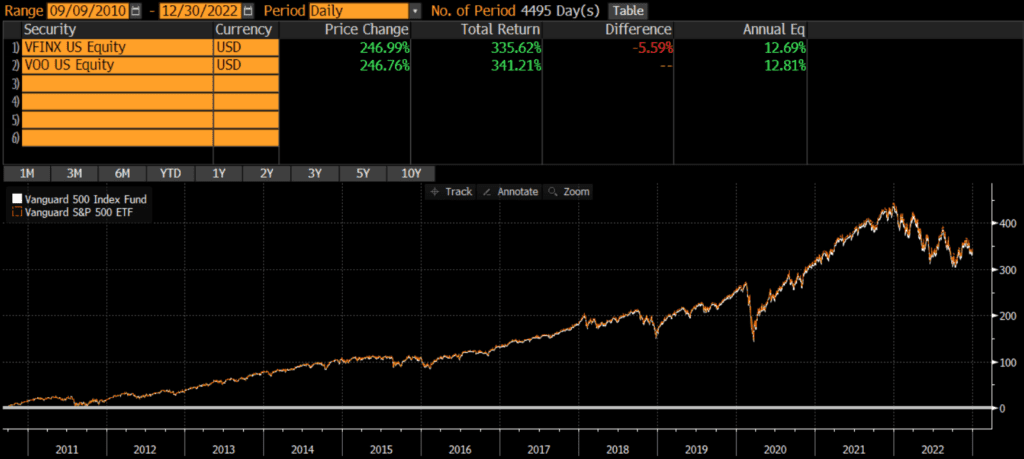FSKAX vs VTI
The Fidelity Total Stock Market Index fund (FSKAX) and the Vanguard Total Stock Market ETF (VTI) are two of the largest “total market” index funds in existence and easily two of the most popular among individual investors. VTI and FSKAX are the core of many investor portfolios and many investors compare FSKAX vs VTI in order to decide which should be the foundation of their portfolio.
A quick reminder that this site does NOT provide investment recommendations. Fund comparisons (such as this one) are not conducted to identify the “best” fund (since that will vary from investor to investor based on investor-specific factors). Rather, these fund comparison posts are designed to identify and distinguish between the fund details that matter versus the ones that don’t.
The Short Answer
There are very few differences between the two funds. In my view, the largest difference is that FSKAX is a mutual fund and VTI is an ETF. This difference in structure leads to differences in taxes, tradability, etc.
The underlying benchmark indices that these funds track are technically different (CRSP US Total Market vs Dow Jones US Total Market), but they are identical is most respects. Consequently, the risk and return of these funds is nearly identical and I consider these two funds equivalent and interchangeable.
The Longer Answer
These two funds are incredibly similar and leads some to question: is VTI the same as FSKAX?
Technically, VTI is a different fund with a different structure than FSKAX. But for many intents and purposes, VTI and FSKAX are identical. Both funds are broad-based indices that represent the US equity markets.
Historical Performance: FSKAX vs VTI
VTI was launched in 2001, while FSKAX was launched on September 7, 2011 (although other share classes of the Fidelity fund existed prior to this date). Since that time, the two funds have had identical performance: 12.65% vs 12.69% on an annualized basis. Over those 11 years, the cumulative performance differential has been less than 1.5%!
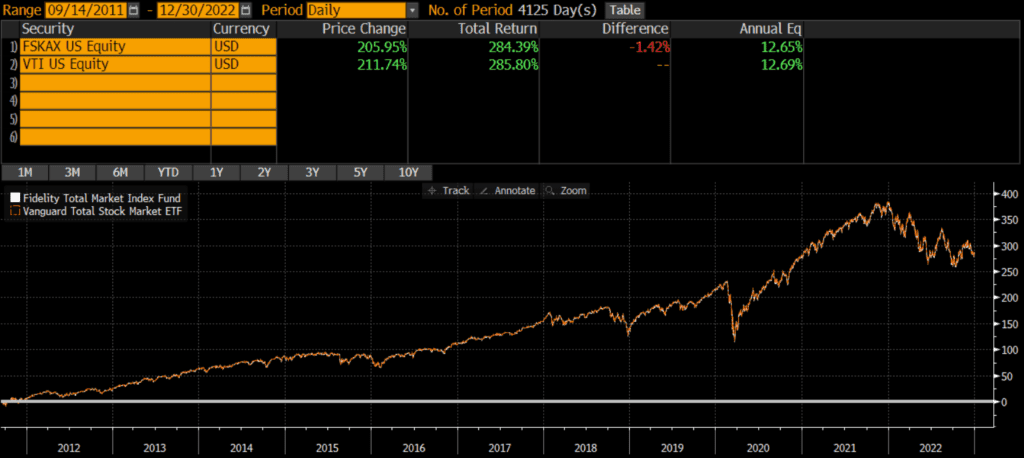
Differences Between FSKAX and VTI
Geography
Both the VTI and FSKAX only include stocks of US-domiciled companies.
Market Capitalization
The two funds have a similar number of holdings (as of 11/30/2022); VTI holds 4,026 stocks versus FSKAX’s 3,989 stocks. Perhaps not surprisingly, the market cap weighting of the funds are identical.
| VTI | FSKAX | |
| Large Cap | 73% | 73% |
| Mid Cap | 19% | 19% |
| Small Cap | 9% | 9% |
Sector Weights
The sector weights of each fund are nearly identical, with many sector weights within .05% of each other!
| VTI | FSKAX | |
| Basic Materials | 2.65% | 2.66% |
| Consumer Cyclical | 10.35% | 10.43% |
| Financial Services | 13.90% | 14.04% |
| Real Estate | 3.48% | 3.46% |
| Communication Services | 6.89% | 6.91% |
| Energy | 5.09% | 5.13% |
| Industrials | 9.80% | 9.58% |
| Technology | 23.04% | 23.18% |
| Consumer Defensive | 6.80% | 6.77% |
| Healthcare | 15.09% | 14.97% |
| Utilities | 2.91% | 2.87% |
Factors to Consider
Expenses
Some investors may point out that the expense ratios between FSKAX and VTI differ. This is true, but it is also reflected in the net performance chart above. At a certain level, differences in expense ratios do not matter. A small absolute difference (in basis points) is essentially meaningless (even if it appears large on a percentage basis). Since these portfolios are essentially identical, I would most likely lean towards VTI.
Transaction Costs
ETFs are free to trade at many brokers and custodians, although many still charge commissions and/or transaction fees to buy/sell mutual funds. To my knowledge, Fidelity does not participate in the pay-to-play arrangements that would allow their mutual funds to trade for free on many platforms. So if an investor account is at Fidelity, it is free to trade FSKAX or VTI. However, only VTI is free to trade in non-Fidelity accounts.
There is a bid-ask spread when trading ETFs, but this spread is typically less than .01% for VTI and individual investor trades will not generally be large enough to “move” the market. In the case of VTI, individual investors should not have a problem trading.
Tax Efficiency & Capital Gain Distributions
ETFs are typically more tax-efficient than mutual funds, due to their ability to avoid realizing capital gains through like-kind redemptions (a process that is beyond the scope of this post).
FSKAX routinely makes capital gains distributions, while VTI does not make capital gains distributions nor do I expect it to (since it is an ETF). FSKAX is relatively tax-efficient since it is an index fund, but VTI is even more tax-efficient.
Tax Loss Harvesting
My personal preference is to keep a portfolio entirely mutual funds or entirely ETFs, due to the mechanics of settlement during tax loss harvesting. If an ETF has declined in value and an investor sells it, the trade and cash proceeds will not settle for two business days (T+2). That investor may want to “replace” the sold ETF immediately and attempt to buy another ETF or mutual fund simultaneously.
However, mutual funds settle on T+1 basis, so cash for the mutual purchase would be due in one business day (which is one day earlier than the cash from the ETF sale is received). This can obviously cause problems and (even though this issue can be addressed with careful planning) I find it easier to keep accounts invested in similar vehicles. In this case, if a portfolio is all mutual funds, I might lean more towards FSKAX. If all ETFs, I might lean more towards VTI.
Investors looking for a mutual fund version of VTI may consider VTI’s mutual fund share class (VTSAX) and should read our comparison of FSKAX vs VTSAX.
Final Thoughts on FSKAX & VTI
Except for the fact that FSKAX is a mutual fund and VTI and ETF, these two funds are nearly identical. Personally, I would not spend too much time trying to divine which is “better” and would just choose whichever makes more sense for my portfolio based on the above factors.
